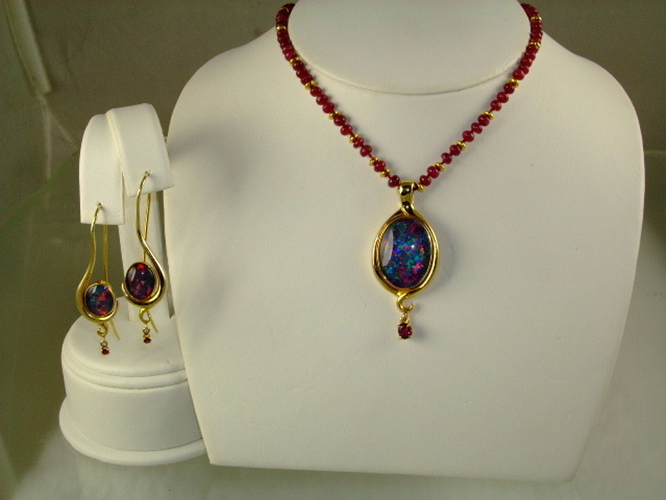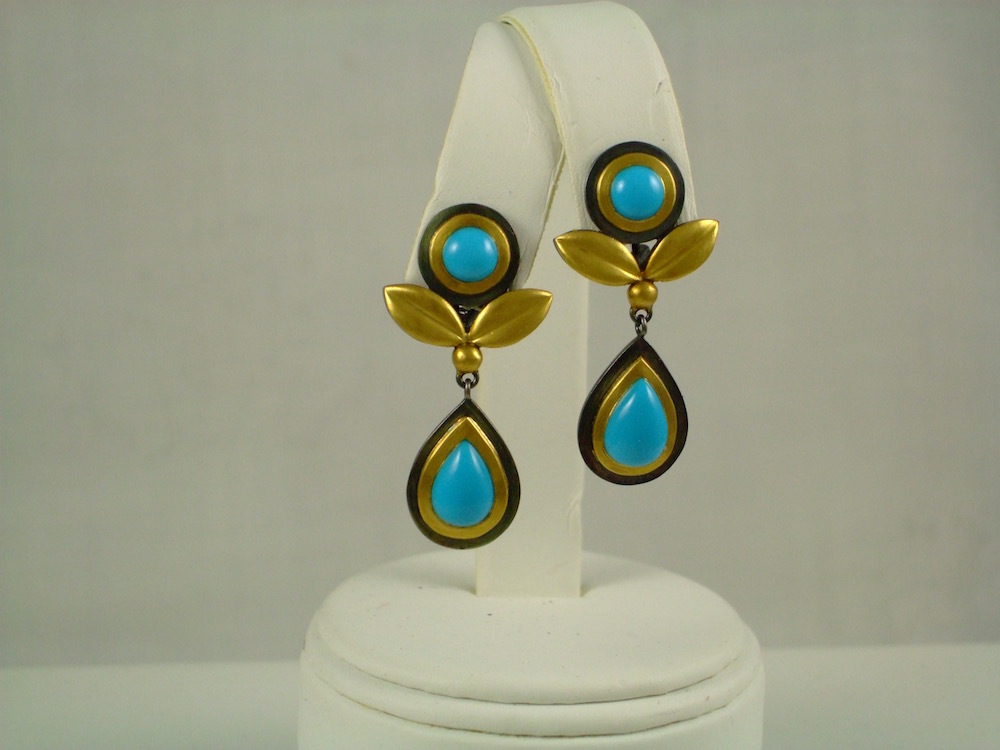Many pieces that are furnace soldered are tack welded together. We used paste solder “dispensers” that produce a fixed amount of paste solder every time you press the foot pedal. Paste solder stays where you put it as the pieces go through the furnace.
Hi Jo!
An ancient, elderly goldsmith I knew way back when would always have an apprentice hand-hold the wooden cone topped with lacquer holding the ring when he set stones with hammer and punch. The cone would be held against the v-cut in the bench pin. He did this to soften the blows–so there would be a bit of flexibility. How do you hold the piece when you are hammer-punching?
Janet in Jerusalem
I usually just use a shelac stick held in a vise or a graver ball.
I respectfully disagree about using a bezel rocker and burnisher even on cabs with thin walled bezels.
If I walked into a professional trade shop and started to use a bezel rocker and a burnisher to set a stone even in a fine silver bezel I would be handed a cardboard box for my tools and immediately shown the door. In my 49 years at the bench I have never ever seen a pro stone setter use one.
It is nearly impossible to get pointy bits like the tip of a pear shaped stone or corners perfect with out using setting punch and hammer. I always start at the corners first. I get them dialed in before I start on the softer curved or straight areas. If one starts on the sides and then moves the metal towards the corners there will often be a funky looking pucker there. l can hammer a fine walled bezel with enough control that I only have to use a buff afterwards. the secret is to use very soft blows with the hammer on the punch and have the punch mirror polished with smoothed slightly beveled edges. I also can control how far down I want the bezel to be on the stone as I go. When I bezel set I take the metal down 80%. At that point I take a polished graver and do a 45 degree bright cut on the inside edge of the bezel. Then I hammer it the rest of the way down and when finished have a nice bright shiny edge where the metal meets the stone. Below see picks of both thin and thick walled bezels on soft stones. The bright cut edge show better on the turquoise earrings.
Now all that said I should confess that I was a liturgical silversmith for a few years so I am happiest when I have a hammer in my hands.
Have fun and make lots of jewelry.
I have been a quiet fan of your work for sometime now and appreciate the knowledge and experience that you often bring to these discussions, but I’m a bit disappointed by your reply. You went from respectfully disagreeing to suggesting that I’m not a professional stone setter and should be fired for using an alternative method in about two sentences. That’s a touch dramatic for an open forum where people come to learn and share their ideas.
In the images you provided, I also would use the hammer and punch method, no argument there. However, as my grandfather taught my father and my father taught me, if I were setting a larger cabochon using 28 or 30 gauge fine silver bezel wire, I would continue to use the bezel rocker and burnisher. And yes, I would also use them to set the bezel over the points of the stone as well. It takes a little filing, but with practice and patience, I can achieve crisp, clean edges and a smooth bezel. Bezel wire this thin is difficult to polish and I find that the rocker and burnisher require the least amount of clean-up. This is a technique that has been practiced by silversmiths in the Southwest for a minute or two now.
We are artists, we have passion and as a result will disagree passionately. This is also an ancient craft with techniques that are as varied as the individuals that use them. For most areas there are at least 9 ways to do something, and they are all right. If we can keep the discussion to the pros/cons of a technique rather than the professionalism or personality of the individual we will have much more fruitful and wholesome conversations which encourage further sharing from which we will all learn something.
Now, if you all will excuse me I must get off my cardboard soapbox and use it to pack my bezel rocker and burnisher and then inform my employer that I’m not as qualified as advertised.
Also, I use soldering paste to repair chains.
I did not in any way mean to imply that you are not a professional. Just that the pros who taught me would not use the same technique you do. I sincerely apologize if I upset you. It seems that you learned southwest style jewelry making form the old timers you were around. I was taught by old European dudes who learned before WWII. Different parts of the world and different styles and techniques.
I also included a photo of thin walled bezels on large opals. The necklace opal is about about an inch and a half or more long.
Jo
No offense taken, I’m probably more sensitive this time of year…Happy Holidays!

